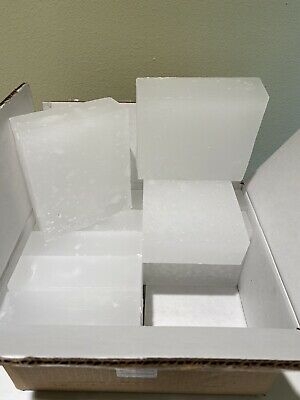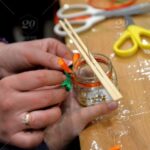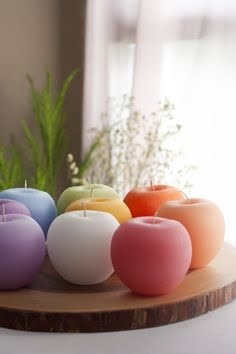Candle-making has emerged as a popular hobby and therapeutic activity for many individuals looking for a creative outlet. With its calming and relaxing nature, more people are turning to this craft as a way to unwind and express their creativity. Whether you are a beginner or an experienced crafter, making candles offers a rewarding experience that allows you to customize scents, colors, and designs to suit your preferences.
In order to embark on your candle-making journey, it is essential to have the right supplies at your disposal. Basic tools such as a double boiler, thermometer, pouring pot, wicks, and containers are necessary for creating homemade candles. Additionally, choosing the right wax is crucial as different types offer unique qualities that can affect the burn time and fragrance throw of the finished product.
Creating a functional workspace is also key when diving into the world of candle-making. Having a dedicated area in your home where you can work comfortably and safely will enhance your overall experience. By organizing your supplies and setting up a designated space for melting wax, pouring molds, and letting candles cool, you can streamline the process and enjoy crafting candles with ease.
Essential Supplies Needed for Candle-Making
When it comes to candle-making, having the right supplies is essential to creating beautiful and fragrant candles. Whether you are a beginner or an experienced crafter, having a well-stocked collection of tools and materials will help you achieve the desired results. Here is a list of essential supplies needed for candle-making:
- Wax: One of the most important components of candle-making, wax comes in various types such as soy wax, paraffin wax, beeswax, and more.
- Wicks: These are crucial for holding the flame and ensuring a clean burn. Make sure to choose the right size wick for your candle size.
- Fragrance oils: Adding scents to your candles can elevate the overall experience. From floral to fruity fragrances, there are endless options to choose from.
- Dyes or colorants: To add a pop of color to your candles, consider using dyes or colorants specifically made for candle-making.
- Containers or molds: Depending on the type of candle you want to make, you will need containers or molds to shape your candles.
- Double boiler or microwave-safe container: For melting wax safely and evenly, having a double boiler or microwave-safe container is essential.
Creating a functional workspace is also crucial for an enjoyable candle-making experience. Set up a designated area where you can work comfortably without any distractions. Make sure to keep all your supplies organized and easily accessible. With these essential tools and materials in hand and a well-prepared workspace, you are ready to embark on your candle-making journey.
Moreover, when considering where to makea candle may depend on personal preferences. Some individuals enjoy the peace and quiet of their own home where they can fully focus on their craft without any external disruptions.
On the other hand, joining workshops or studios dedicated to candle-making can provide a creative atmosphere and opportunities for learning from experienced instructors and fellow enthusiasts. Ultimately, choosing where to make candles boils down to what suits your style best – whether it be at home in a cozy corner or in a communal setting filled with like-minded individuals sharing the same passion for crafting beautiful candles.
Setting Up Your Workspace
When it comes to candle-making, having a well-organized workspace is key to a successful and enjoyable experience. Whether you are a beginner or an experienced crafter, setting up your area properly can make the process smoother and more efficient. Here are some tips on creating a functional workspace for making candles at home:
- Designate a specific area: Choose a well-ventilated and clutter-free space in your home where you can comfortably work on your candle-making projects. Make sure there is enough room for all your supplies and equipment.
- Invest in proper storage: Keep your tools, waxes, fragrance oils, dyes, and other supplies organized and easily accessible by using bins, containers, shelves, or drawers. This will save you time and prevent any unnecessary stress while working on your candles.
- Set up a work station: Have a sturdy table or countertop where you can place your melting pot, thermometer, stirring utensils, molds, and other necessary equipment. Make sure the surface is heat-resistant and easy to clean.
Creating a calming ambiance in your candle-making workspace can enhance the overall experience. Consider adding some soothing music, lighting candles (safely away from flammable materials), or incorporating some plants or essential oil diffusers for relaxation. Remember that this space is where you will unleash your creativity and unwind, so make it as comfortable and inspiring as possible.
Lastly, don’t forget about safety measures when setting up your candle-making area at home. Always work in a well-ventilated space to avoid inhaling fumes from melting wax.
Keep fire extinguishers nearby in case of emergencies and follow proper procedures when handling hot wax and other materials. With these tips in mind, you can create a functional and organized workspace that allows you to fully enjoy the art of making candles right from the comfort of your own home.
Choosing the Right Wax
When it comes to candle-making, choosing the right wax is crucial in determining the quality and characteristics of the final product. There are several types of wax available in the market, each with its own unique qualities and benefits. One popular option is soy wax, known for its clean-burning properties and ability to hold fragrance well. Soy wax is also eco-friendly, making it a preferred choice for those who prioritize sustainability in their candle-making practice.
Another common type of wax used in candle-making is paraffin wax. Paraffin wax is known for its excellent scent throw and ability to hold vibrant colors, making it a favorite among beginners and experienced candle makers alike. However, it is important to note that paraffin wax is derived from petroleum, which may not align with everyone’s preferences when it comes to environmental concerns.
For those looking for a more natural alternative, beeswax is an excellent option for making candles. Beeswax has a natural golden hue and a subtle honey-like aroma that adds a unique touch to any candle.
Additionally, beeswax has been praised for its longer burn time compared to other waxes, making it a great choice for creating long-lasting candles. Whether you prefer soy wax, paraffin wax, or beeswax, selecting the right type of wax will ultimately determine the success of your candle-making endeavors.
When considering where to make a candle using these different types of waxes, you have the flexibility to choose a setting that suits your preferences and needs. Whether you prefer the comfort of your own home kitchen or seek inspiration from joining workshops or studios dedicated to candle-making, there are plenty of options available where you can indulge in this therapeutic and creative activity.
Experimenting with different waxes in various settings can help you discover your preferred style and technique when it comes to crafting personalized candles tailored to your taste.
Selecting Fragrance Oils and Dyes
When it comes to candle-making, selecting the right fragrance oils and dyes is crucial in creating personalized and unique candles. Fragrance oils not only add a pleasant scent to the candle but also play a significant role in setting the mood and ambiance of the space where the candle will be used.
Whether you prefer floral, fruity, woody, or refreshing scents, there is a wide range of fragrance oils available to suit your preferences. It’s essential to choose high-quality oils that are specifically formulated for use in candles to ensure that they blend well with the wax and emit a long-lasting aroma.
In addition to fragrance oils, dyes are another important element in candle-making that can enhance the visual appeal of your creations. Dyes come in various forms, including liquid, block, and chips, allowing you to achieve vibrant or subtle colors based on your desired outcome.
When selecting dyes for your candles, consider the type of wax you are using as some dyes may perform better with certain waxes than others. Experimenting with different color combinations can add an artistic touch to your candles and make them stand out.
Where to Make a Candle at Home
Making candles at home offers convenience and flexibility as you can easily set up a dedicated workspace in a cozy corner or room in your house. Be sure to choose an area with good ventilation and a stable surface where you can safely melt wax and pour it into molds without any interruptions.
Creating a soothing atmosphere with some calming music or scented candles can enhance your candle-making experience at home. Remember to gather all the necessary supplies beforehand so that you can focus on enjoying the creative process without any distractions.
Step-by-Step Guide to Making a Candle
Making candles can be a rewarding and enjoyable experience, allowing you to customize scents, colors, and designs to suit your preferences. To start making candles, you will need essential supplies such as wax, wicks, fragrance oils, dyes, a double boiler or microwave-safe container for melting wax, a thermometer, a stirring utensil, and molds. These items can be easily found at craft stores or online shops dedicated to candle-making.
Once you have gathered all the necessary supplies, it is important to set up your workspace in a well-ventilated area with a flat surface. Protect your work area with newspaper or a disposable tablecloth to catch any spills or drips. Ensure that all tools are within reach and that you have read through the candle-making instructions before starting. Safety is paramount when working with hot wax and fragrances.
The process of making a candle involves melting the wax to the desired temperature, adding fragrance oils and dyes according to your preference, placing the wick in the mold, and carefully pouring the melted wax into the mold. Allow the candle to cool and harden completely before removing it from the mold.
Experiment with different scents and colors to create unique candles that reflect your personal style. Whether you choose to make candles at home in your kitchen or attend a candle-making workshop at a local studio, this process can be both relaxing and creatively fulfilling.
| Activity | Location |
|---|---|
| Candle-making at home | Your own kitchen or designated workspace |
| Candle-making workshops | Local studios or craft stores offering classes |
| Candle-making studios | Specialized establishments where you can indulge in candle-making with expert guidance |
Creative Candle-Making Ideas
Layered Candles
One creative candle-making idea to elevate your skills is creating layered candles. This involves pouring different colored waxes in layers to create a visually stunning effect. To achieve this, carefully pour each layer of melted wax into the container and allow it to slightly harden before adding the next layer. You can experiment with contrasting colors or stick to a cohesive color palette for a more harmonious look.
Marbled Candles
Another unique technique to try is making marbled candles. This involves swirling different colored waxes together to create a marble-like pattern in the finished candle. To achieve this effect, gently swirl the melted wax with a skewer or toothpick before it fully sets. The result is a beautifully intricate design that adds a touch of elegance to your homemade candles.
Embedding Objects
For those looking for a more personalized touch, embedding objects in your candles can be a fun and creative idea. Consider adding dried flowers, herbs, or even small trinkets like beads or gemstones into your candle molds before pouring the wax. This not only adds visual interest but also creates unique and customized candles that make great gifts for family and friends.
Exploring these creative candle-making ideas can help you elevate your skills and take your hobby to the next level. Whether you prefer layered candles, marbled designs, or embedded objects, experimenting with different techniques can lead to beautiful and one-of-a-kind creations that bring joy and relaxation into your space.
Where to Make a Candle
Candle-making has undoubtedly become a popular hobby for many individuals seeking a creative and therapeutic outlet. The process of crafting a candle from scratch not only allows for personalization in terms of scents and colors but also provides a sense of accomplishment. As the demand for handmade products continues to rise, more people are looking to explore the art of candle-making as a way to unwind and unleash their creativity.
When it comes to diving into the world of candle-making, one of the key considerations is where to set up your workspace. Whether you choose to create your candles at home in the comfort of your own kitchen or dedicate a corner in a workshop or studio, the environment plays a crucial role in enhancing your experience.
By establishing a functional and organized area equipped with all the essential supplies, you can ensure a smooth and enjoyable candle-making session.
In conclusion, wherever you decide to makea candle – be it at home, workshops, or studios – the most important aspect is that you find a space that inspires and motivates you. With the right tools, materials, and setting, you can immerse yourself in the soothing process of creating unique candles that reflect your style and personality. So go ahead, explore different locations where you can indulge in this relaxing activity, and let your imagination run wild with endless candle-making possibilities.
Frequently Asked Questions
What Is the Average Cost to Make a Candle?
The average cost to make a candle can vary depending on the quality of materials used, the size of the candle, and any additional decorations or scents added. On average, it can range from a few dollars up to $20 or more per candle.
How Do I Make My Own Candles?
Making your own candles can be a fun and creative process. To start, you will need wax, a wick, a container, fragrance or essential oils (if desired), coloring (optional), and tools like a double boiler and thermometer. Melt the wax, add color and scent, place the wick in the container, pour the wax carefully, and let it set.
What Is the Cheapest Way to Make a Candle?
The cheapest way to make a candle is to opt for basic materials like plain wax, simple containers like mason jars or tea cups, and essential oils instead of expensive fragrances. By keeping your designs minimalistic and using readily available supplies, you can reduce costs significantly while still creating beautiful candles for yourself or as gifts.

Welcome to my candle making blog! In this blog, I will be sharing my tips and tricks for making candles. I will also be sharing some of my favorite recipes.




